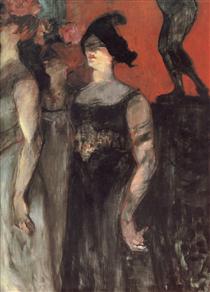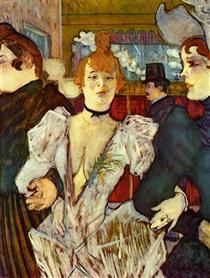
1864 - 1901
Henri de Toulouse-Lautrec

description
Key ideas:
– Never embellishing his models, often giving an image quite roughly, the artist managed to express his sympathy for the models. It is expressed either in a compressed form of the composition, or in the speciality of a few vigorous strokes.
– To maximally concentrate the viewer on the inner world of the model, Lautrec makes his or her external features less sharp, sometimes quite vague, and uses abstract background.
– Toulouse-Lautrec did not paint landscapes as an independent genre. Nevertheless, he masterly used the details of a landscape, as well as subjects of environment, to reveal the true nature of his models.
– According to the master, an artist should not just copy the facial features of his model, but also express his or her general appearance. The distinguishing feature of the works by Toulouse-Lautrec is that he never idealized his models. On the contrary, the painter showed their negative sides.
– The usage of a thin layer of an oil color makes the manner of the author close to watercolor technique. Imparting transparency to the composition, he creates an impression of fast performance, incredible legerity and freedom.
– For the greater effect he deliberately preserves his ”author’s alteration”: trucks of a pencil are seen through the color. Generally the painter boldly interprets colors, combining incongruous. For example, white and pink background can be balanced with violet and blue colors, green accent spots.
– Building the composition, the artist could ”cut off” half a face or half a leg, put the figures frontally or in an unusual diagonal way that ”draws” the viewer in the picture.
– Much freedom is demonstrated in the choice of models too. Those are grand seigneurs and prostitutes, laundresses and dancers, actors and aristocrats. The plot can be a ball or a medical examination of brothel workers, a circus show or working scientists.
1878
1881
1882
1884
1891
1893
1894
1899
1901
The broken legs
Becoming a student of René Princeteau

The movement to Paris

His studio was opened

Becoming famous

Participated in exhibitions in Antwerp

Meeting Oscar Wilde

Deterioration in the health

The Death

